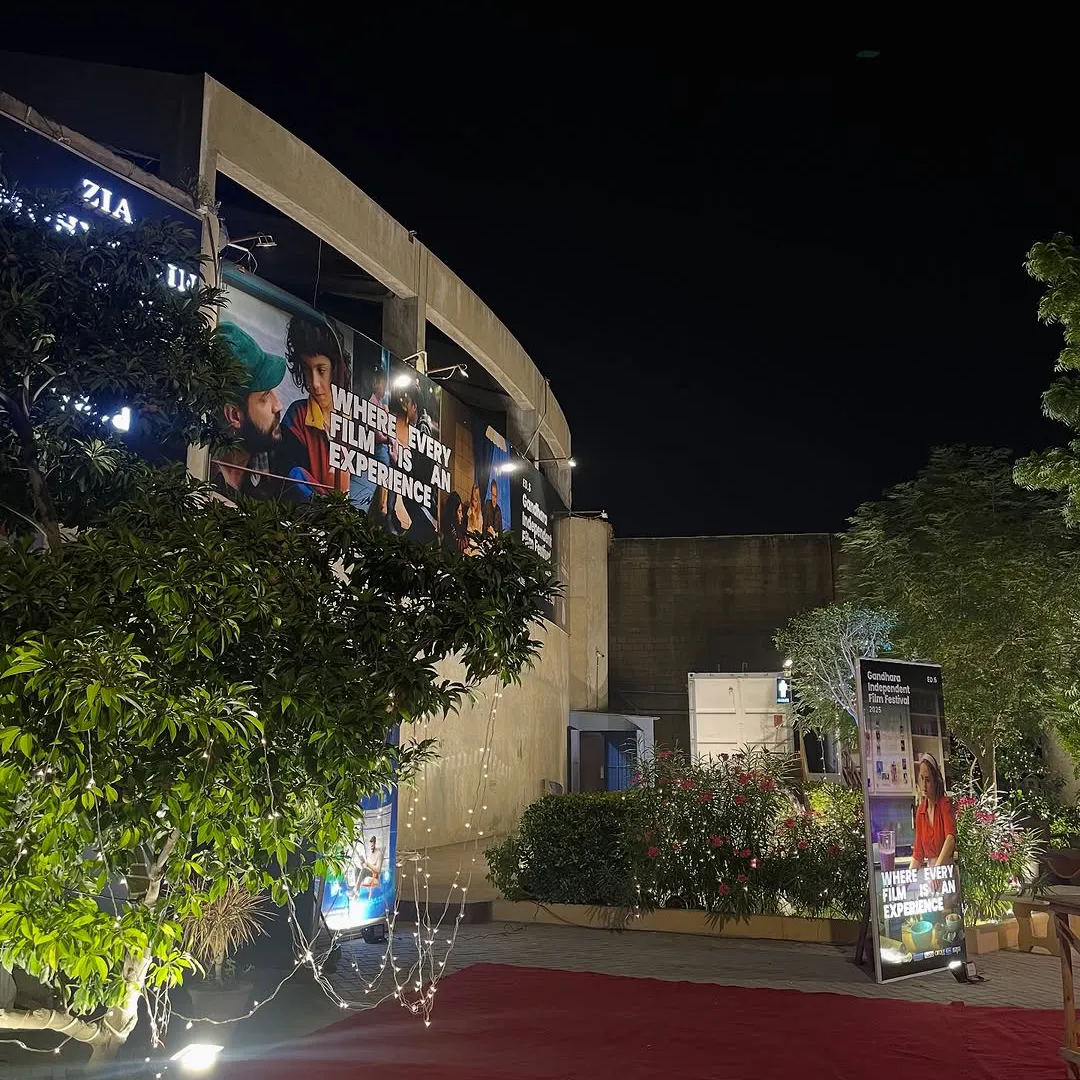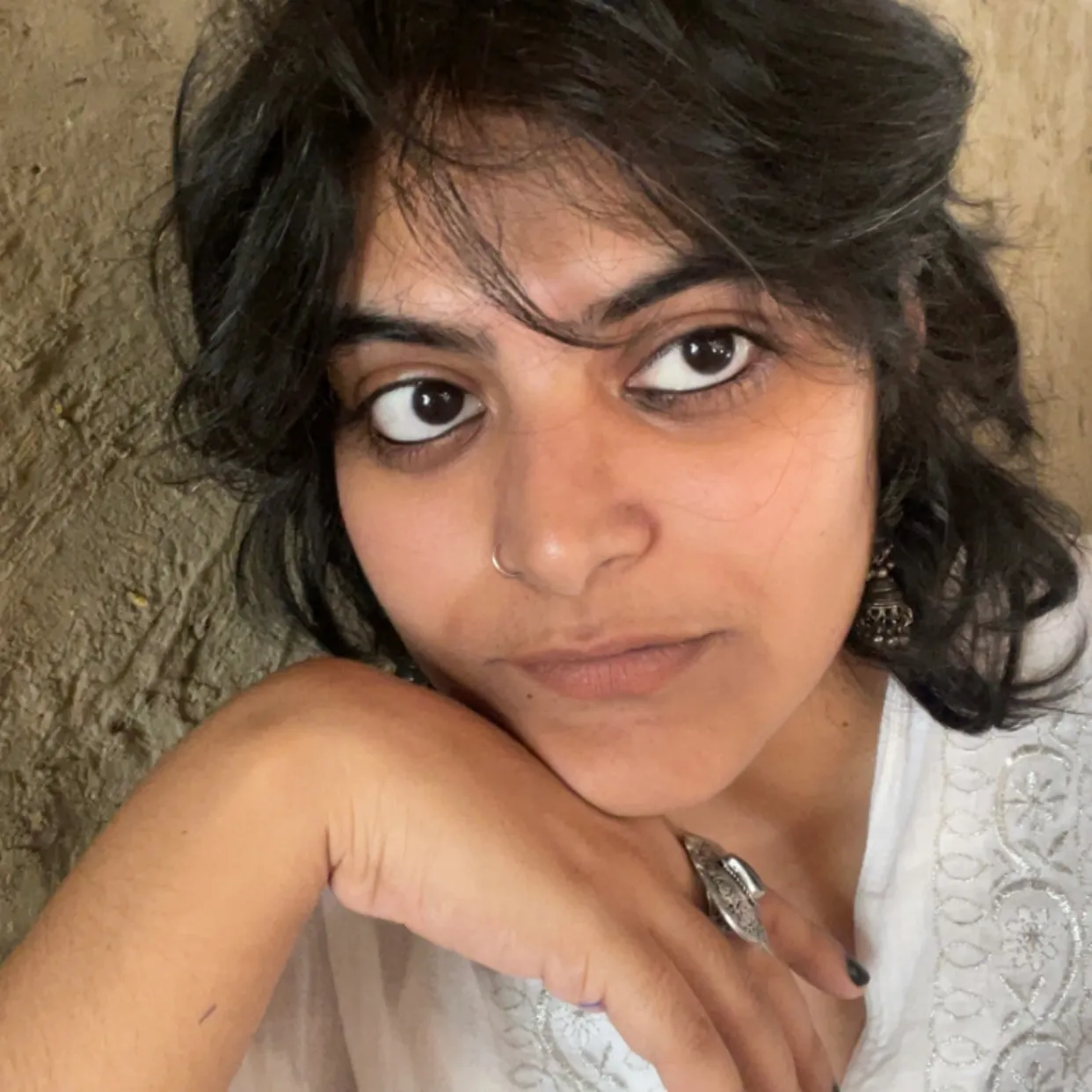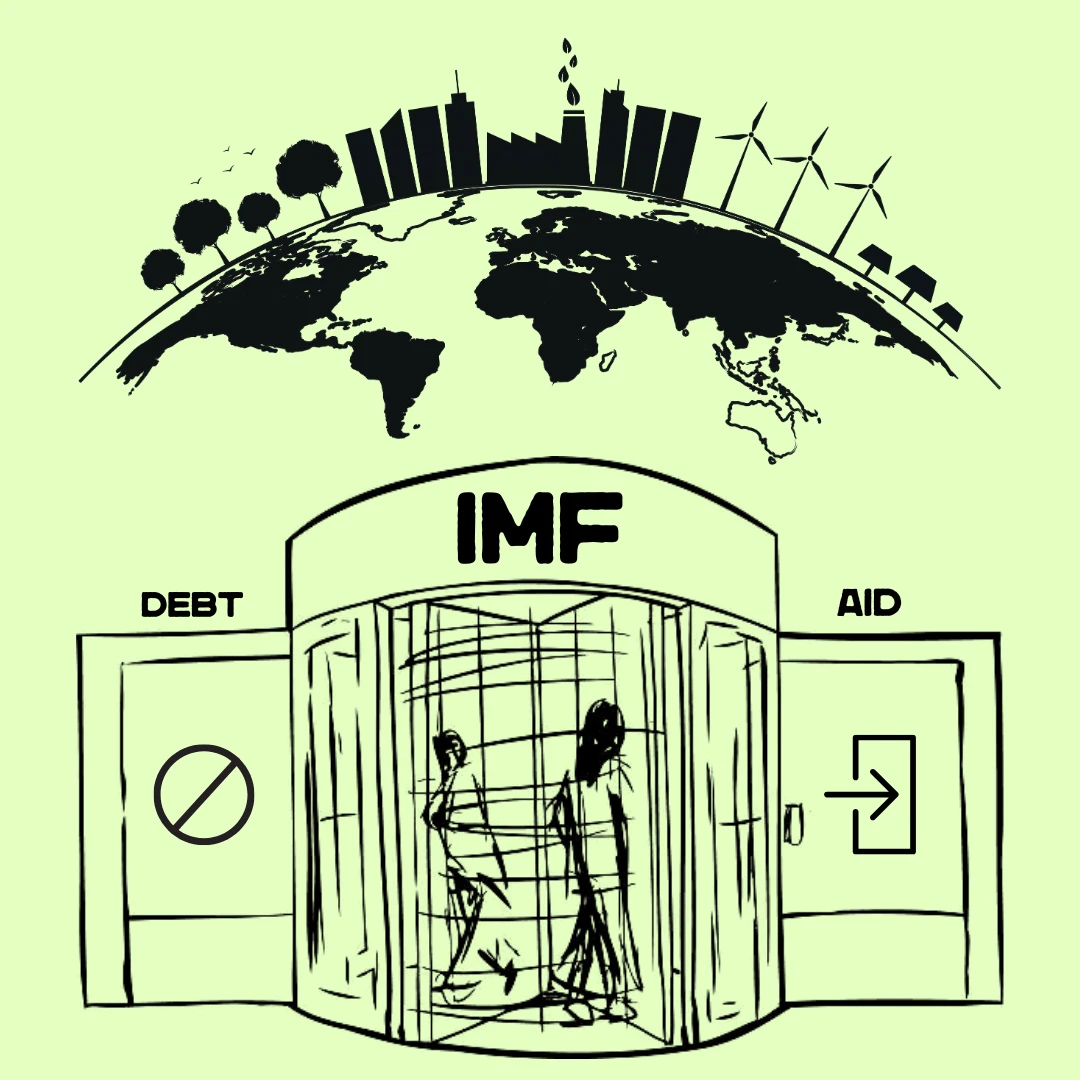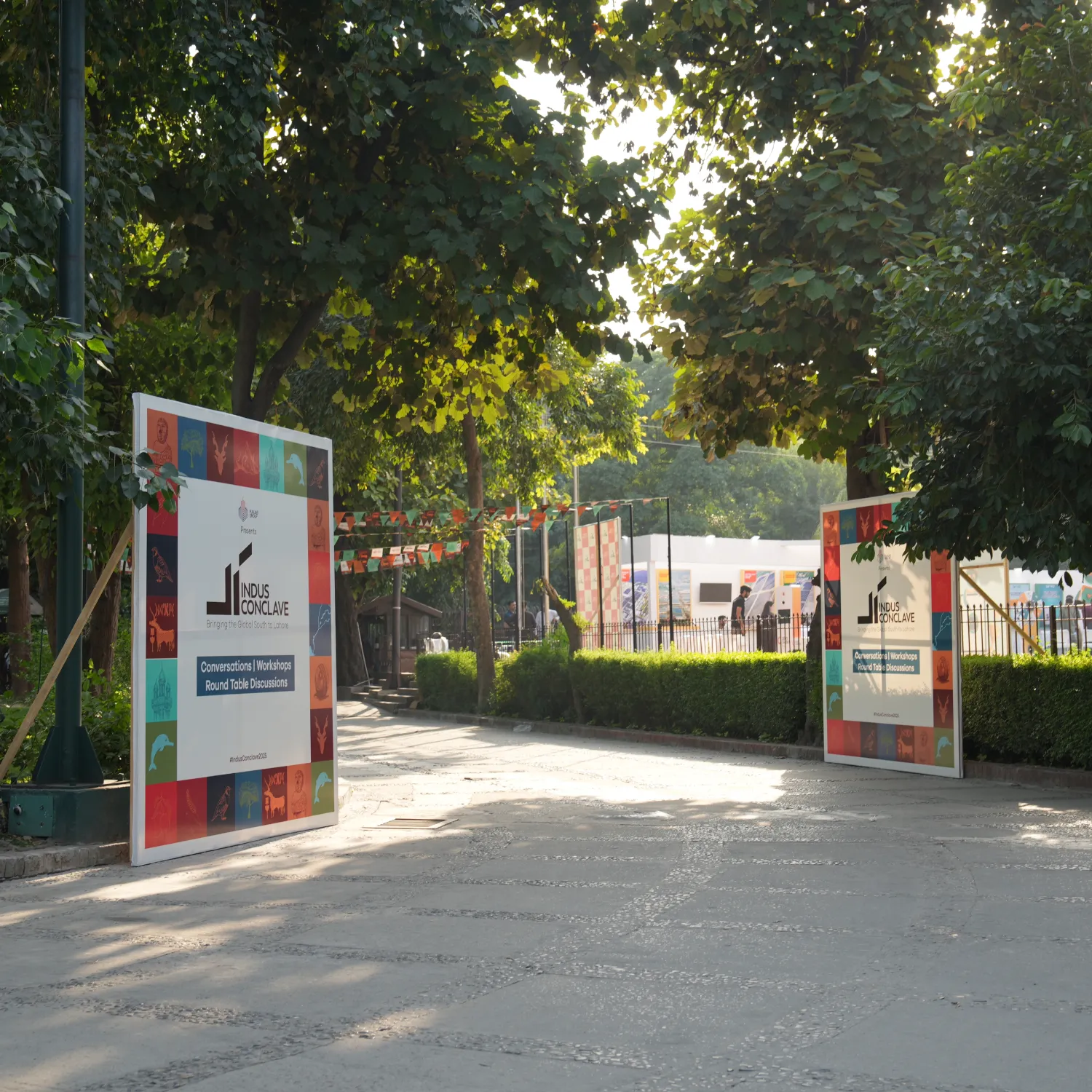Despite the arrival of October, which usually entails a slight chill in the evening air, Karachi remained on its mildly hot weather frequency while the Gandhara Independent Film Festival (GIFF) took place at the National Academy of Performing Arts (NAPA).
This year marked the 6th edition of the well-loved niche festival, with its programme divided between an in-person and online schedule, with the former running between 18–19 October, following an invite-only opening ceremony on the 17th.
The opening ceremony — where filmmakers, crew members, media persons and other stakeholders mingled — featured speeches that emphasised the importance of cross medium partnerships for the cultural industry. These were followed by a surprise screening of Australian actor and director Nash Edgerton’s wacky, absurdist short film trilogy Spider, Bear, and Shark. There was laughter and some gasps alike from the audience owing to the dark comedy genre, which set the tone for the range of emotions to accompany the films during the course of the entire weekend.
The day’s programme concluded with Elvira Lind’s The Letter Room, which had a star-studded cast including Oscar Isaac, Alia Shawkat and John Douglas Thompson. The film was a welcome end to the opening day, bringing an emotional equilibrium among the attendees with its grounded empathetic center.
GIFF’s first official day was packed with a line-up of film screenings and a workshop by filmmaker Jamshed Raza, better known as Jami, on the importance of plot and thematic statement for a film, with a similar schedule for the second day, including film screenings, a talk on the influence of film on our culture and vice versa. The last day concluded with an awards ceremony for both the in-person and online edition with all the major writing, directing, editing and sound categories.
The crowd mostly dwindled in between various screenings, with Pakistani films bringing in a larger audience among the line-up. Most of the local films were followed by a Q&A session with the filmmakers, facilitated by GIFF Communications Head, Afreen Zehra.
Karachi has had a rich history of local theatres and cinemas, with a dedicated group of cinephiles patronising them. Despite threats from extremist groups, local cinemas, especially in Karachi, fuelled a generation of film lovers; the visual medium, often the most accessible artform, can be a great equaliser. GIFF is in some ways following in that tradition, by bringing people together, cultivating conversations and providing the collaborative middle ground around the medium of film.
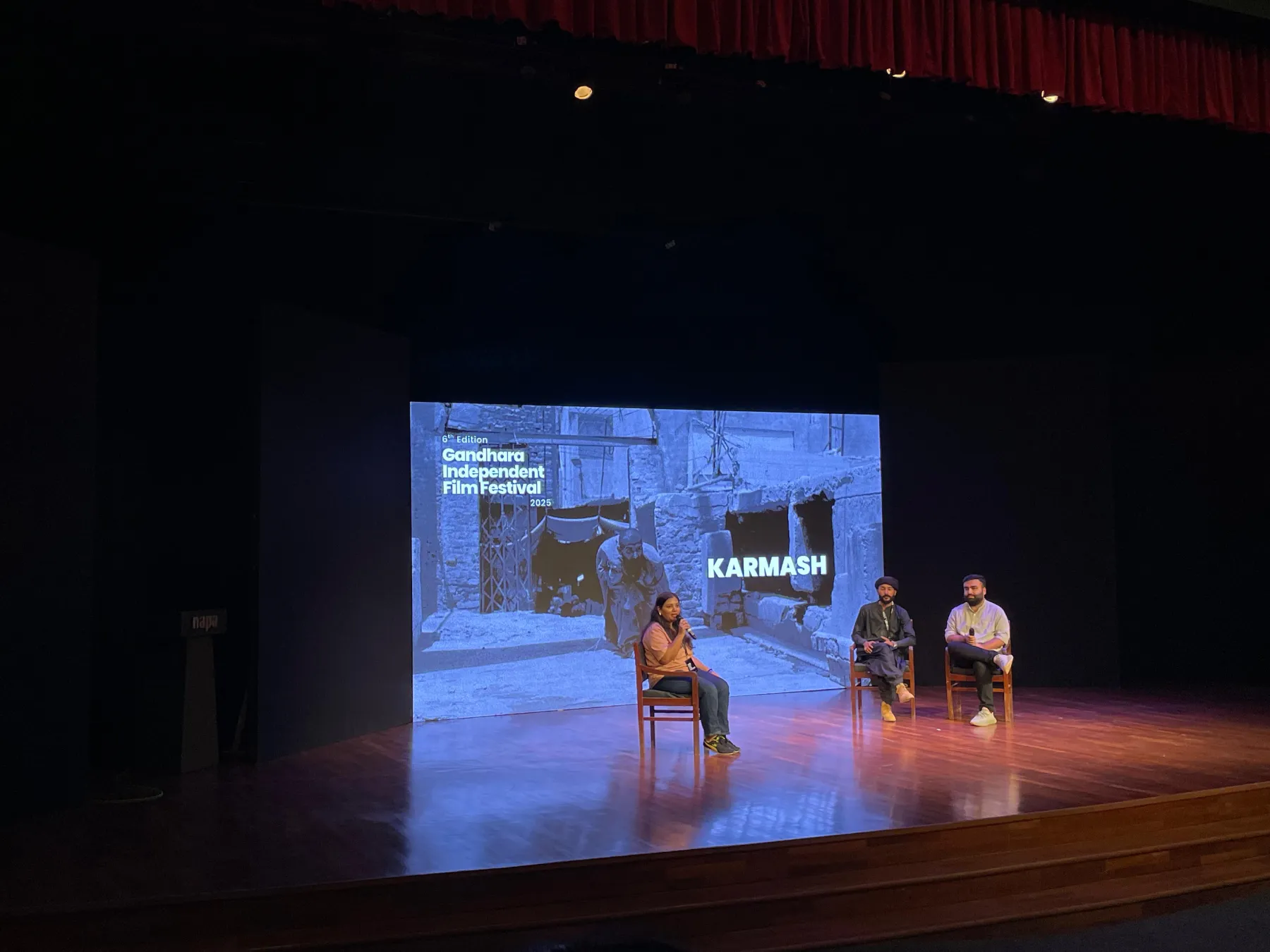
The festival placed equal emphasis on the commercial and artistic aspects of filmmaking and storytelling, with special attention and focus on emerging and aspiring student filmmakers. (Each Q&A section included specific advice for aspiring filmmakers.) Another natural thread to come out during the course of the festival was the importance of collaborations between different cultures and countries. Two films were at the forefront of this conversation: a collaborative film between Saudi Arabia and Pakistan entitled Funkaar; and another between South Korea and Pakistan, A Better Place.
The screening line-up included films from 10+ countries including France, Canada, Germany, Iran, Argentina and Indonesia in addition to Pakistan. Most of the foreign films were back-dated, while a majority of the local films were having their first Pakistani premieres. A standout among the list was Karmash by Aleem Bukhari, which made history as the first Pakistani short to make it to Cannes’s Directors’ Fortnight. The film took home the award for Best Sound Design at the Gandhara Independent Film Festival.
Other Pakistani films that premiered were Tabish Habib’s father-daughter saga Time After Time, which won Best Director and Best Film; Abdul Majid Abbasi’s beautifully shot story of a child’s internalised world, Kareem, which took home the award for Best Screenplay. Both screenings were followed by insightful and engaged Q&As with the filmmakers.
Abbasi, in his advice to young filmmakers, encouraged them to write and make stories true to themselves. He commented that globally Pakistani stories are categorised under Bollywood, as they are unfortunately considered similar, insisting that Pakistani stories are unique and no one else can capture them like us.
There were some obvious glitches and technical errors during screenings, sometimes with sound, other times with the projection — errors that most, if not all, of the attendees were eager to look past, generally happy with the efforts of the programme and its improving curve with each addition.
“Honestly, I do realise that holding a film festival in Pakistan is a very, very difficult task. But if I were to say one thing that could be improved is the quality of the screening itself,” script supervisor on Time After Time, Abrahim said, alluding to the funding and curating problems that arise with organising a film festival in a place like Pakistan. Adding to the conversation, Minahil, assistant director of that same film, added, “I’m enjoying the whole NAPA environment; if it happened at a cinema, you get to see the film at a bigger, nicer screen but at the same time, you don’t get to interact with people like this, you don’t have an outdoor space. You don’t get to see a red carpet like this.” Both travelled from Lahore, along with several cast members to attend the festival.
The curation seemed less honed on thematic dialogue between different films and more on diversity in writing and genre. The themes fluctuated wildly from digital misogyny to complicated filial bonds; tensions between class to immigration and the climate apocalypse. There was also a sharp distinction between themes in local and foreign films, with the former largely revolving around cultural social issues.
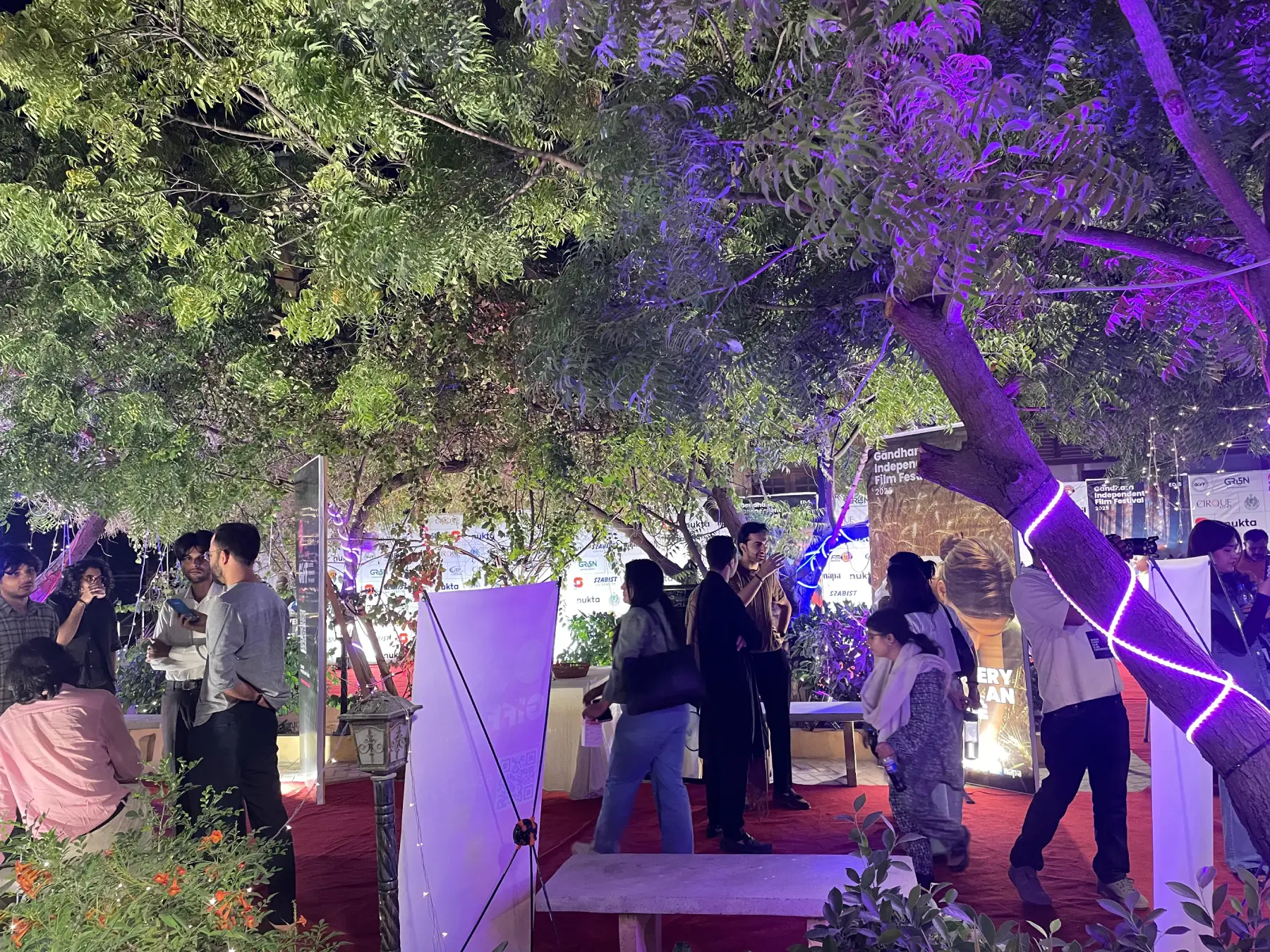
Among major standouts for me were: Sandstorm by Seemab Gul, a suffocating and apt portrayal of how it is to live and desire on your own terms in a digital and conservative world, which shared the Best Screenplay award with Kareem; A Place Under The Sun by Vlad Bolgarin, a tender and complicated treatise on the tension between your homeland and moving for better opportunities; The Late Wind by Shugyla Serzhan, a beautiful moving account of a woman dealing with the layered strain of gender and class; and Himalia by Clara Milo and Juliette Losky, which blew my mind with its cinematography and editing, elevating the dystopic tale of a child being used for colonial experiments in a post apocalypse world. Himalia also won Best Foreign Language Screenplay Award at the festival.
Seeing some of these films in the dark and cosy NAPA theatre was a welcome bodily experience. The ordeal of sitting around crew members and a very niche category of Karachi people who took time out to see obscure films from various corners of the world felt quite communal. The location is nestled in the centre of Karachi’s old town; with Saddar, I.I. Chundrigarh Road, Frere Town, and Pakistan Chowk all encircling it from different directions, you could head out in any direction from the performance art school and end up in any one of Karachi’s renowned food streets. At the end of the last day, I went and had Azaad Bun Kebab at Burns Road and Caramel Crunch at Peshawari Ice Cream, sitting in the dim light of my car with a friend. Traffic moved in loud intervals around us, a slow but chill breeze picked up, pink adeniums lined the footpath.
The online edition of the festival is set to run from 24 October to 2 November, with diverse screenings from all over the world. All are available to stream for free on myco.

